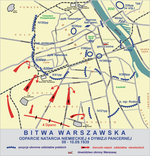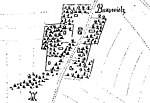Good Maharaja Square
2012 establishments in PolandBuildings and structures completed in 2012Garden squaresIndia–Poland relationsOchota ... and 3 more
Parks established in the 2010sParks in WarsawSquares in Warsaw

The Good Maharaja Square (Polish: Skwer Dobrego Maharadży), also known as the Opacz Park (Polish: Park Opaczewski), is a garden square in Warsaw, Poland, located in the district of Ochota, between Grójecka, Opaczewska Street, and Szczęśliwicka Streets.
Excerpt from the Wikipedia article Good Maharaja Square (License: CC BY-SA 3.0, Authors, Images).Good Maharaja Square
Białobrzeska, Warsaw Ochota
Geographical coordinates (GPS) Address External links Nearby Places Show on map
Geographical coordinates (GPS)
| Latitude | Longitude |
|---|---|
| N 52.210432 ° | E 20.970909 ° |
Address
Białobrzeska 12
02-371 Warsaw, Ochota
Masovian Voivodeship, Poland
Open on Google Maps











